Many families of young children are turning to Montessori methods when it comes to parenting. One of the most common questions we hear from our community is, "What can I do at home that reflects my child's Montessori classroom experience?" The Montessori method is one that honors the child as an autonomous being, but how can we make space for our children in our homes without the space becoming one giant toy bin? Here are some helpful tips that will reflect what is happening at school for your child and can get you started on the right track.
The Heart of the Home: The Kitchen
One of the simplest ways to establish trust and encourage independence is to have a child-friendly shelf or cabinet in the kitchen. Starting when your children are toddlers and continuing until they are able to reach and use everything the adults do, set aside a small cabinet or drawer in your kitchen just for them. Here you can keep child sized plates, bowls, cups, silverware, and perhaps even a few cloth napkins. This will allow your child to get what they need whenever they need it, help with table setting, and they can feel good about doing something for themselves.
Want to take it a step further? Keep pre-portioned snacks in the cabinet for your child to access whenever they want. Some families also designate an area of the refrigerator for this purpose, along with a small pitcher containing water or milk that little hands can easily pour themselves.
Enable your child to help with cleaning with brooms, dust pan and other utensils that are perfect for small hands. Children can clean after accidents or help to clean different areas of the house when these tools are made accessible to them.
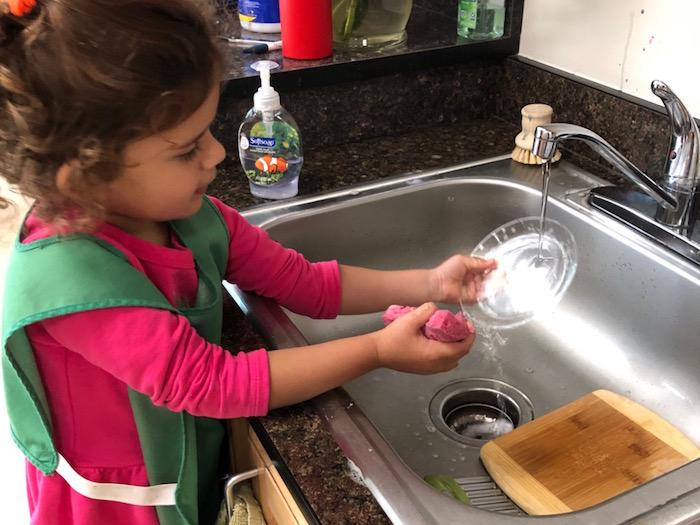
Simplify Your Mornings
Getting out the door in the morning can be one of the most rushed and sometimes stressful times of day for families of young children. A few quick edits to your entryway can help make everything run a bit more smoothly.
Consider your child’s height and hang one or two hooks near the door just for them. Keep a small box or bin that they can toss their shoes into, thus keeping them contained, tidy, and easy to find when they need them. We have even seen some families hang a small mirror at child height in the same area. Taking these steps will help build responsibility, keep your home organized, and ease the frantic pace of many of our mornings.
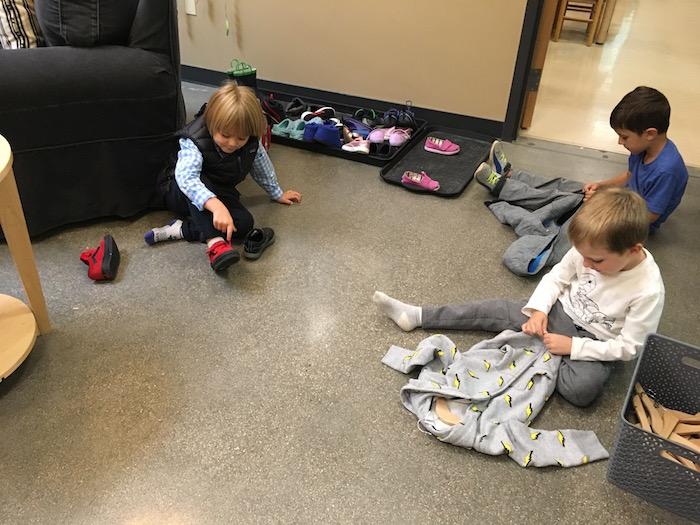
Put Most Toys Away
This recent study covers the scientific reasoning behind why less is more, but it isn’t easy. Even if you are mindful of not buying your child too many toys, there are always gifts from family members, party favors, and unpredictable little treasures that children collect.
How can we manage all that stuff?
When your child is at an age where they can comprehend the ideas, it’s good to talk to them about waste and consumption, then ask for their help in working to manage it all. Until then, observe your child at play, determine what they actually use or enjoy, then rotate toys according to what you notice. Avoid the bottomless toy box and opt instead for using low shelves as storage. Items are easier to see and manage that way. For further inspiration on creating an environment that "sparks joy" with your child, but is also Marie Kondo inspired: read this terrific post from the Montessori Notebook.
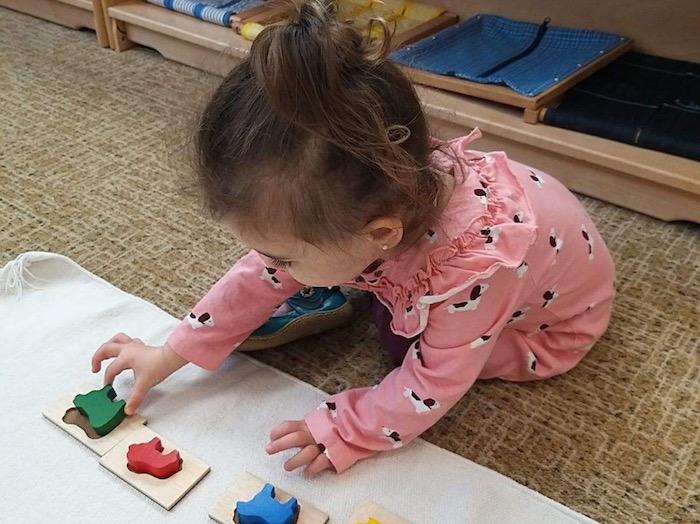
Create Book Areas
Reading is great for children in so many ways, so keeping small assortments of books handy wherever you are is important. Rotating books can keep your child interested and it can even be fun to make your selections. Some ideas:
- Keep a basket of seasonal books in the corner of your living room.
- Stack your potty training books in the bathroom.
- Your child loves dinosaurs? Check some dino books out from the library and keep them in a bag in the car so they’re always on hand (for trips, waiting rooms, an older sibling's soccer game…)
- Basically, anywhere your child spends time and there isn’t a bookshelf nearby, collect up a few books and tuck them within reach.
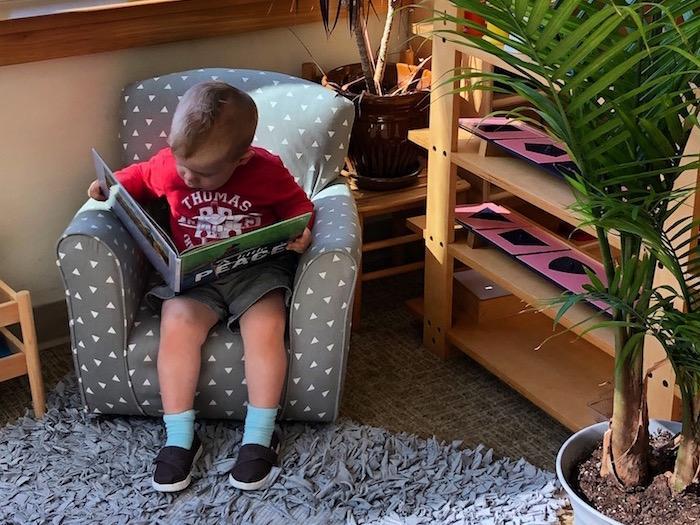
The Bedroom Space
One of the earliest ways to build independence into your child’s bedrooms is with your choice of bed when they are infants. Many Montessori families choose to use a floor bed. If the rest of the child’s room is safe, this allows them freedom of movement when they wake. Many babies and toddlers will wake up and crawl/walk around the room, keeping themselves occupied with their toys until their parents wake up and come to get them. The floor bed can be implemented whenever the parents feel comfortable giving it a try. If your little one starts crawling out of the crib but isn’t quite ready for the height of a toddler or regular bed, a simple solution is to just lay the mattress on the floor until they are ready for the next stage.
Another area to keep in mind: your child’s access to their clothing. Older toddlers and preschool aged children can begin selecting their own clothes and parents can help with this by using a lower closet rod extender or hooks. By making a limited number of choices available to them, you can ensure they will wear something appropriate for the weather while still giving them the empowering ability to decide for themselves.
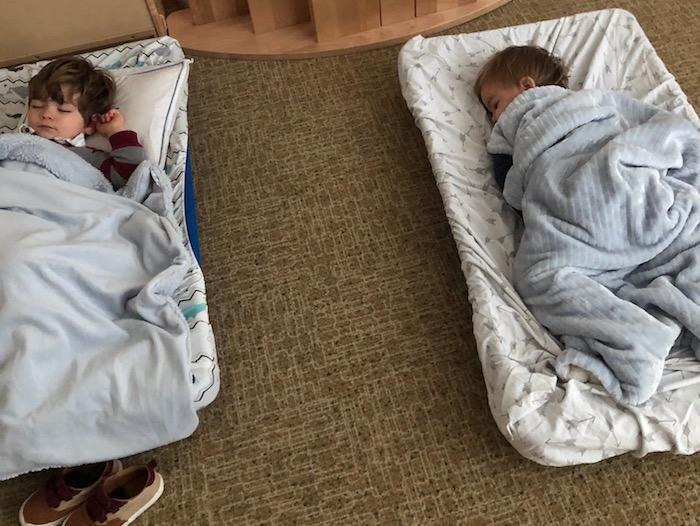
Make space for your children.
It all really comes down to shifting our perspective. Our children are human beings who are worthy of living in a home that serves them and their needs. The key is balance. Should our children’s things take over the entire house? Definitely not! (You live there, too, after all.) Small adjustments in each room children spend time can make a huge difference in their lives.
If you feel inspired to learn more about how you can bring Maria Montessori's vision into your home, we have found the podcast and writings from The Montessori Notebook to be a great family resource.
